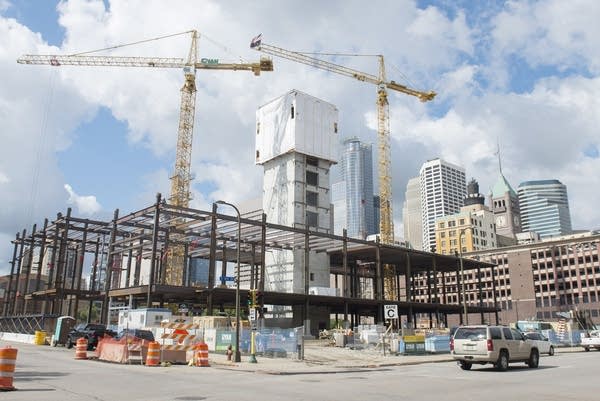Minneapolis leaders welcome downtown building boom

Downtown East, a mixed-use development project by Ryan Companies, is under construction in downtown Minneapolis.
Bridget Bennett / MPR News
Go Deeper.
Create an account or log in to save stories.
Like this?
Thanks for liking this story! We have added it to a list of your favorite stories.


